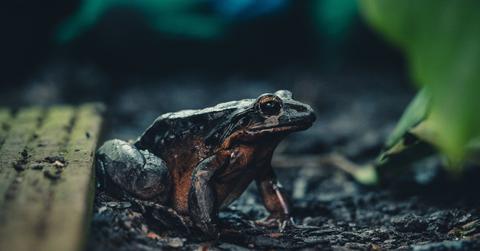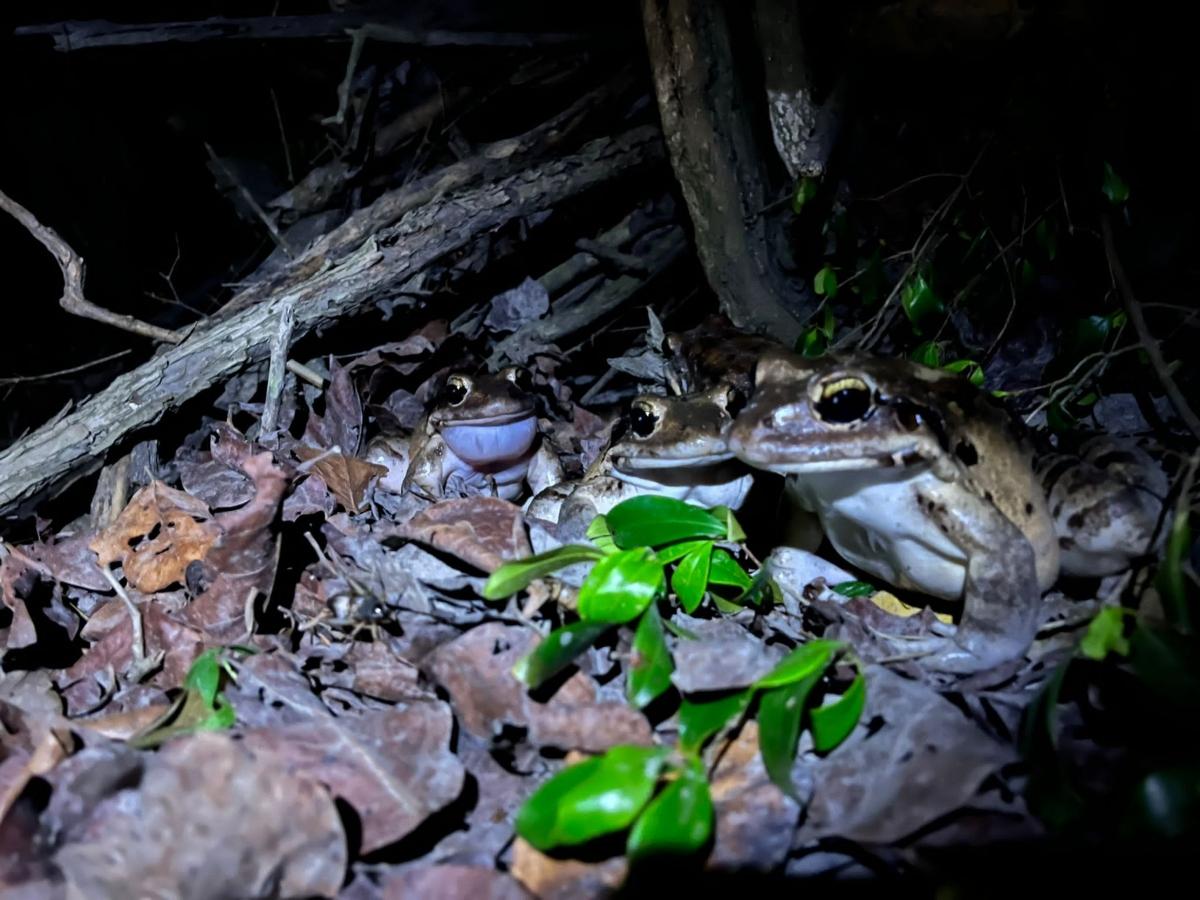Mountain Chicken Frog Is Going Extinct, With Just 21 Remaining in the Wild
Published Oct. 17 2023, 1:52 p.m. ET
The Gist:
- The mountain chicken frog is a large species of frog found in the wild only on the island of Dominica.
- Researchers have monitored mountain chicken frog populations as chytrid fungus and climate change cause destruction.
- Only 21 mountain chicken frogs remain living in the wild in 2023.
Endangered species are crucial to humanity's survival, with every species on the planet interconnected. The mountain chicken frog is one critically endangered species, and as of October 2023, the species is only found on a single island, with just 21 alive in the wild.
We're taking a look at the climate-related causes that have led to the rapid loss of population of the mountain chicken frog. Why is the mountain chicken frog endangered, and what can be done to stop it from going extinct?
Why is the mountain chicken frog endangered?
A survey released in 2023 showed that only 21 of the Leptodactylus fallax, or mountain chicken frog, remain living in the wild, per IFLScience. The dire circumstances of this species are due to "a devastating combination of infectious disease, climate change, and habitat loss," the outlet noted.
For the study, 28 researchers spent 960 hours searching for live frogs in the wild, and they found two dead frogs and 21 living frogs.
Climate change is a factor in the loss of numbers in this rare species, with rivers drying up and forcing frogs to look for other habitats. As Forbes reported, the mountain chicken frog once was native to seven Caribbean islands, but activities like agriculture and development have caused habitat destruction that has brought the species' population down significantly. Dogs, cats, and other invasive species have made matters worse.
The Zoological Society of London (ZSL) explained that the mountain chicken frog has survived major threats like volcanoes, hurricanes, and hunting. But in 2002, the fungal disease Amphibian chytridiomycosis emerged in Dominica, and since then, has brought the species' population down by 99 percent. The fungus also invaded Montserrat in 2009 and led to the species becoming fully extinct from that island.
“In two years, these vitally important apex predators could become Extinct in the Wild, meaning they will cease to exist anywhere except in human care,” said Andrew Cunningham, Professor of Wildlife Epidemiology at ZSL’s Institute of Zoology, per IFLScience. However, Cunningham also said that researchers are swabbing mouths of the living frogs to look for signs that any are immune to the fungus, which could offer "hope for the species."
Chytrid isn't only devastating to mountain chicken frogs. According to Cornell Wildlife Health Lab, chytrid disease affects over 350 amphibian species. The results are upsetting: over 200 species of frogs and other amphibians are extinct or have declined in population due to the infectious disease.
Mountain chicken frog facts:
According to ZSL, the mountain chicken frog:
- Is also called the giant ditch frog
- Can jump several feet in the air
- Can weigh up to 1 kilogram (2.2 pounds), which is approximately 40 times the weight of a common frog
- Blends into the forest floor's leaves well, thanks to the species' red, brown, and white skin.
And as per the Mountain Chicken Recovery Programme, mountain chicken frogs also:
- Are one of the largest frog species
- Are known for the males being territorial
- Have both the males and females guarding their young in their nests
- Hunt and search for mates after dusk
- Have a lifespan of 12 years.
The London Zoo explained that it has built a secure facility for breeding mountain chicken frogs. These frogs were kept in a controlled environment before being released into the wild in Montserrat in both 2014 and 2019. Researchers continue to test methods like antifungal baths for frogs living in wild habitats to protect them from chytrid.

